The usefulness of a GPS meter for road and mountain biking is obvious! Safe thanks to its GPS function, this type of computer integrates numerous functions that lead to better training and more enjoyable outings.
GPS bike computers
Whether you're a performance-oriented rider or a singles explorer, always on the lookout for new tracks, a GPS bike computer is ideal.
From basic meters that deliver essential data, to full-featured on-board computers, there are numerous models available on the market. To help you make your choice, here are a few points to consider.
ALL YOU NEED TO KNOW ABOUT GPS COMPUTERS
Visit GPS meter cycle computer differs from the classic cycle computer by adding an essential GPS function, which allows you to record the track of a ride and collect more complete and precise data, particularly in terms of distance and speed in particular. It also has the advantage of being easier to install than a standard speedometer, since there's no need to set wheel and tire sizes, for example.
In fact, it works thanks to the GPS (Global Positioning System) geolocation system, made up of some thirty satellites, from which it receives and cross-references information in real time. Understandably, the speed of acquisition and the accuracy of the geolocation signal are major issues for a GPS bike, which is why most models today offer dual compatibility with GPS and Glonass, the Russian equivalent of the American GPS system, to gather even more information. Some models are also equipped to receive data from the European Galileo positioning system, although this network is not yet 100% operational.
Indispensable data displayed live on the speedometer screen include speed, distance travelled andaltitudewhich are available on all models. It's worth noting that top-of-the-range computers prefer a barometric sensor - sensor to GPS data, to provide information about thealtimetry information (altitude, vertical drop, percentage of slope, etc.).
GPS METER TYPES
GPS computers come in a wide range of models, from the simplest to the most sophisticated, from the most compact measuring less than 5 cm long by 3 cm wide to the largest, comparable in size to some smartphones.
Some come alone, others with one or more useful training sensors (cardio belt, speed sensor, power sensor).
There are also GPS meters with a background map background from those without:
- GPS meters with cartography have everything to appeal to hikers and mountain bikers who like to explore new terrain, discovering the surroundings of their vacation destination for example, without risking getting lost. They offer better readability, with a nice-sized screen, and more or less advanced navigation options, on which the range levels are partly based, and which explain the large price differences.
- Meters without cartography are more compact and lightweight. They offer more limited navigation options, which can be dispensed with by cyclists looking for pure performance, more interested in the performance-related data they can collect during and after their training.
It is of course possible to use a smartphone as a GPS on a bike, with a dedicated application. But reliability, autonomy, sturdiness, lightness and readability are just some of the criteria that argue in favor of a real GPS computer.
FUNCTIONALITIES
More practical and with a larger, sometimes touch-sensitive screen, the GPS computer offers clear advantages over the GPS watch when used exclusively for cycling.
Of course, we can't go into detail here about all the functions that GPS computers can offer - some models are veritable mines of information! Instead, we'll be exploring the features that make the product so interesting, that help cyclists keep track of their performance and make their outings more enjoyable!
Basic information
Regardless of the basic information (time, calendar, etc.) offered by all GPS computers, each model includes speed, distance and altitude data collected via GPS signal. Most of them also offer data of great interest to cyclists, such as positive altitude difference, percentage of slope, temperature, calories burned...
Some models allow you to customize the display of this data, with pages providing more or less information. Cyclists with impaired eyesight may wish to consider the possibility of changing the display when making their choice.
ANT+ or Bluetooth compatibility
A GPS computer can be connected to third-party accessories, such as a cardio belt, cadence sensor or power sensor, via Bluetooth and/or ANT+, to gather additional information useful for performance monitoring.
Some models accept both communication protocols (Bluetooth and ANT+), while others support only one. It's a good idea to check this compatibility when choosing your GPS computer, so you can use it with the sensor you already own.
Data transfer and connectivity
Visit Bluetooth connectivity, Wifi or via USB cable also lets you transfer the data recorded by your GPS computer directly to a smartphone or computer, for use on popular training platforms (Strava, Training Peaks...), or on brand applications (Garmin Connect, Polar Flow...), which can analyze it and give you advice on how to progress.
The higher up the range you go, the more comprehensive the connected functions of your GPS computer. In particular, they can enable cyclists to communicate with other cycling colleagues, and allow family and friends to follow their route live. Many models allow you to receive smartphone notifications directly on the screen (calls, SMS, e-mails).
Navigation, tracking and guidance
The primary purpose of a GPS computer is to enable you to find your way around, and to navigate easily and calmly on unfamiliar roads or tracks! But when it comes to navigation, not all meters offer the same possibilities, and naturally, the most advanced functions are reserved for the very top-of-the-range meters, which can go beyond simple track-following to allow you to search for a precise address and be guided to that point, just like a car GPS.
With a bike GPS, cyclists can record their route, which they can then follow on their next outing. He can retrieve routes recorded by other cyclists, or even program a route in advance, on his favorite training application. And even without integrated cartography, cyclists can be guided solely by the track recorded in advance, with changes of direction indicated on the computer screen. On most of them, a return-to-start function is also available, useful if the track is lost!
The higher up the range you go, especially if you're using a GPS computer with cartography, the richer the navigation functions become. The most complete models can even tell you about points of interest along your route (cafés, campsites...)!
Cartography
With their larger screens, GPS computers with integrated cartography are designed to make navigation easier for cyclists. Not all preloaded maps are equally accurate. Some brands offer comprehensive topographical maps, useful for hikers and mountain bikers, but at a price. If you're interested, be sure to consider the memory capacity of your GPS computer first, to make sure it can handle it!
Which GPS computer should I choose for my cycling?
GPS computers are no exception to the rule when it comes to cycling equipment: the choice you make depends on your riding style and your budget!
For mountain bikers and touring cyclists, a model with cartography is preferable, incorporating interesting navigation functions.
A more compact GPS computer, without mapping, is more suited to performance-oriented cyclists, who can pair it with cardio belts and cadence and power sensors.
In all cases, it's important to ensure that your computer is compatible in terms of communication protocols (Bluetooth, ANT+, NFC, etc.), in order to use these third-party accessories if they are not supplied with it.
In general, autonomy and memory capacity are variables to be carefully considered.
For ease of use, choose a model with a large color touchscreen. If you often have to ride in low-light conditions, make sure it has good lighting, too.
ACCESSORIES - Bike GPS
-
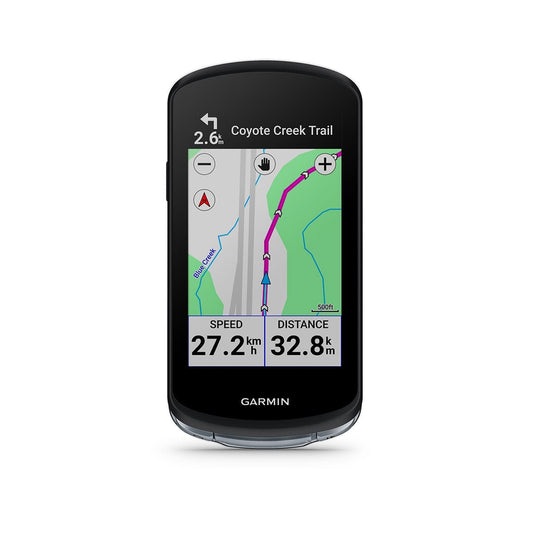
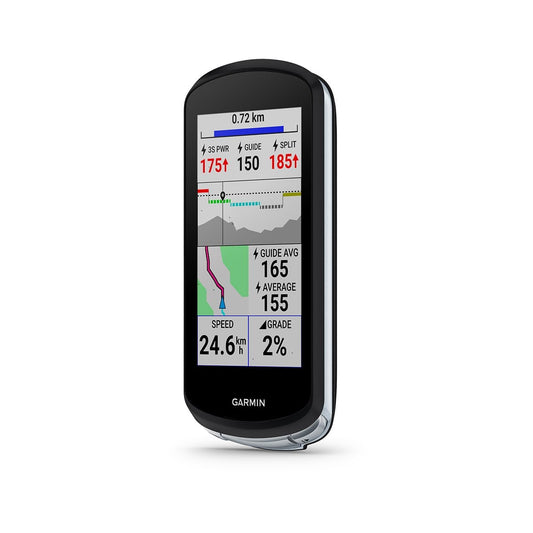
GARMIN EDGE 1040 GPS
Regular price 429,90 €Regular priceUnit price per -
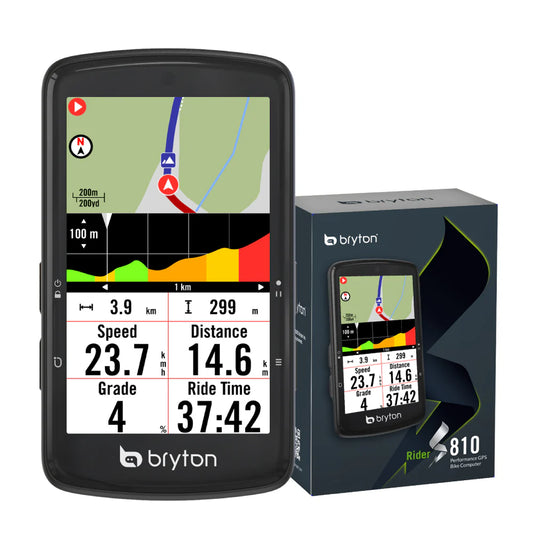
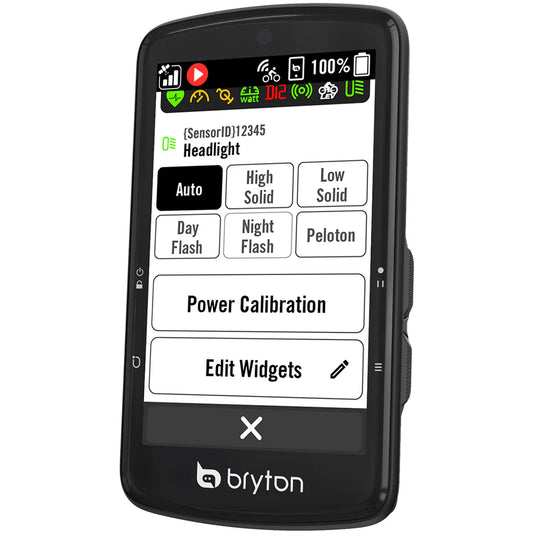
GPS BRYTON RIDER S810E
Regular price 269,90 €Regular priceUnit price per -
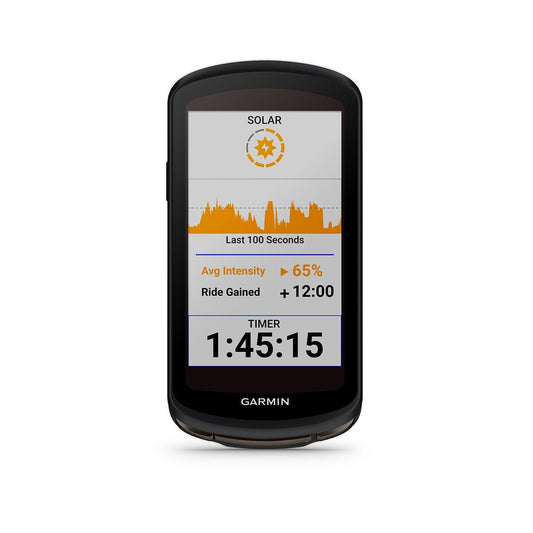
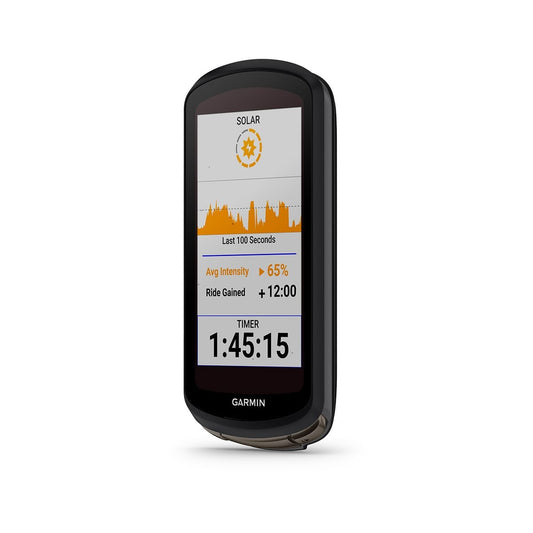
GARMIN EDGE 1040 SOLAR GPS
Regular price 549,90 €Regular priceUnit price per -
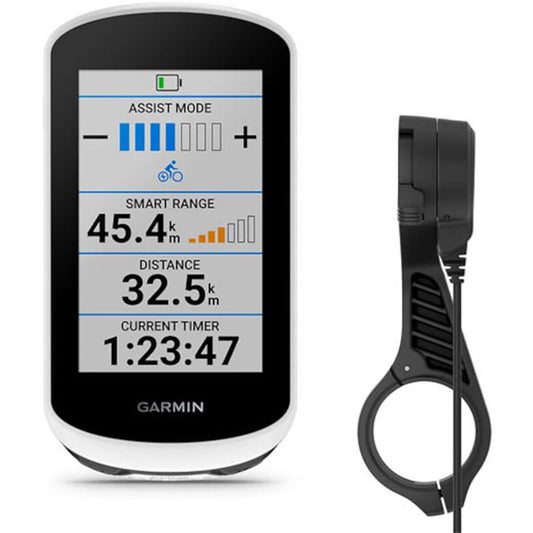
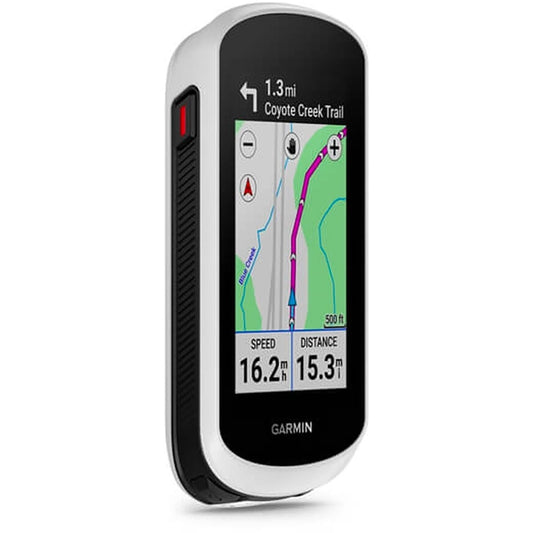
GARMIN EDGE EXPLORE 2 POWER GPS PACK with Powered Stand
Regular price 349,90 €Regular priceUnit price per -
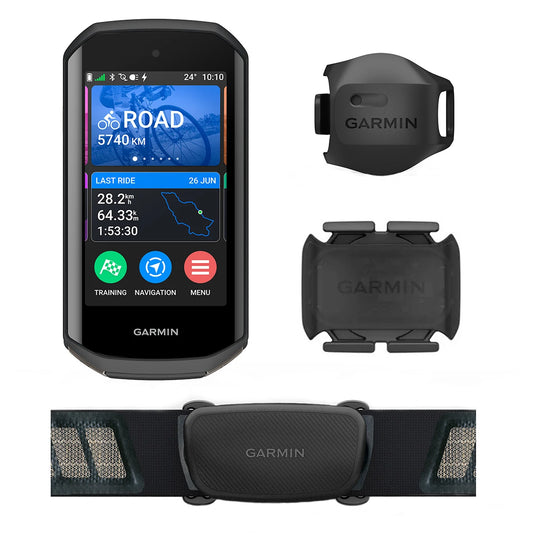
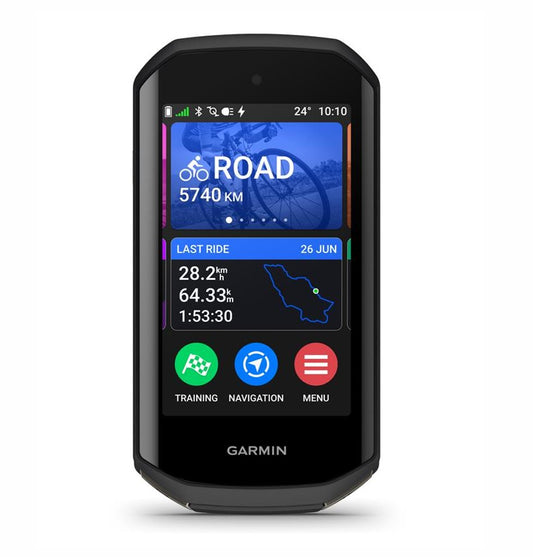
GPS GARMIN EDGE 1050 BUNDLE
Regular price 779,90 €Regular priceUnit price per -
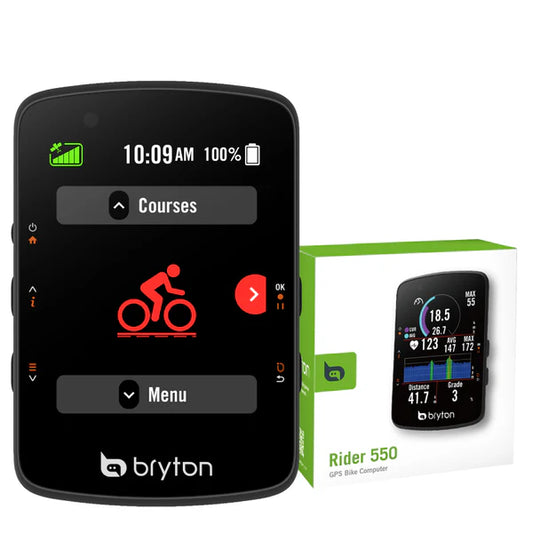
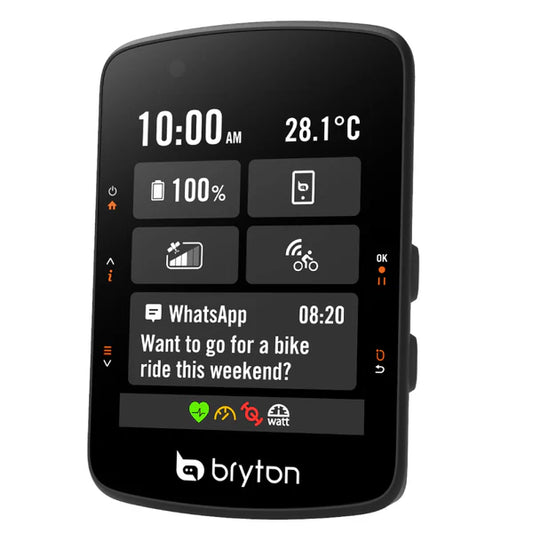
GPS BRYTON RIDER 550 E
Regular price 127,90 €Regular priceUnit price per -

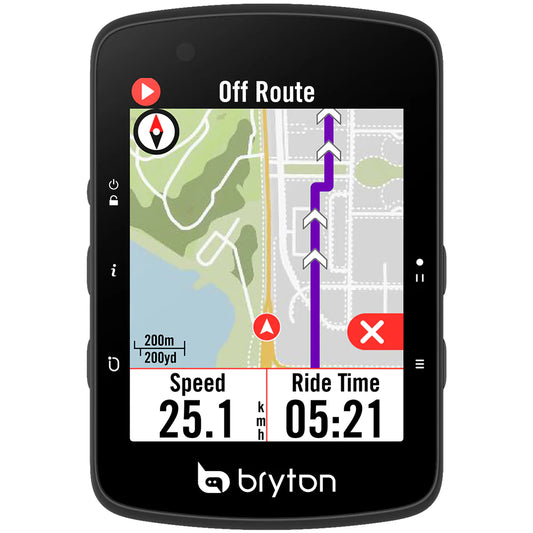
GPS BRYTON RIDER 650 E
Regular price 169,90 €Regular priceUnit price per -
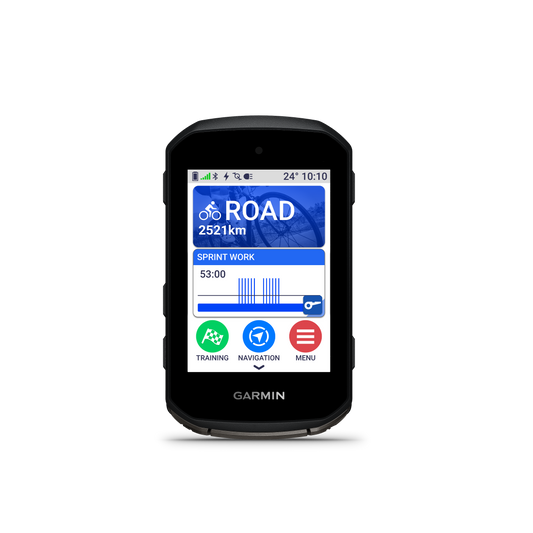
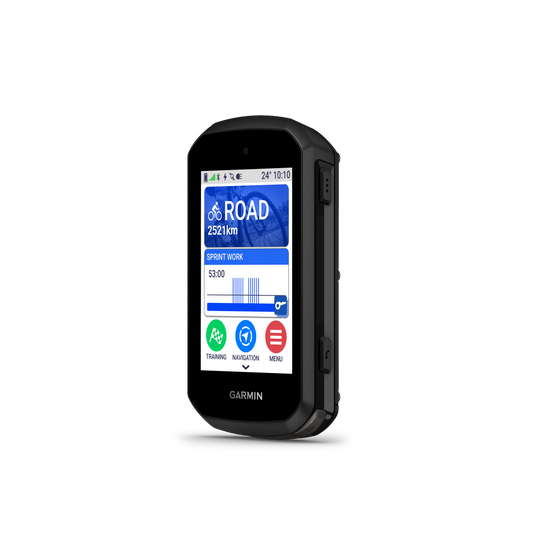
GARMIN EDGE 850 GPS
Regular price 509,90 €Regular priceUnit price per















